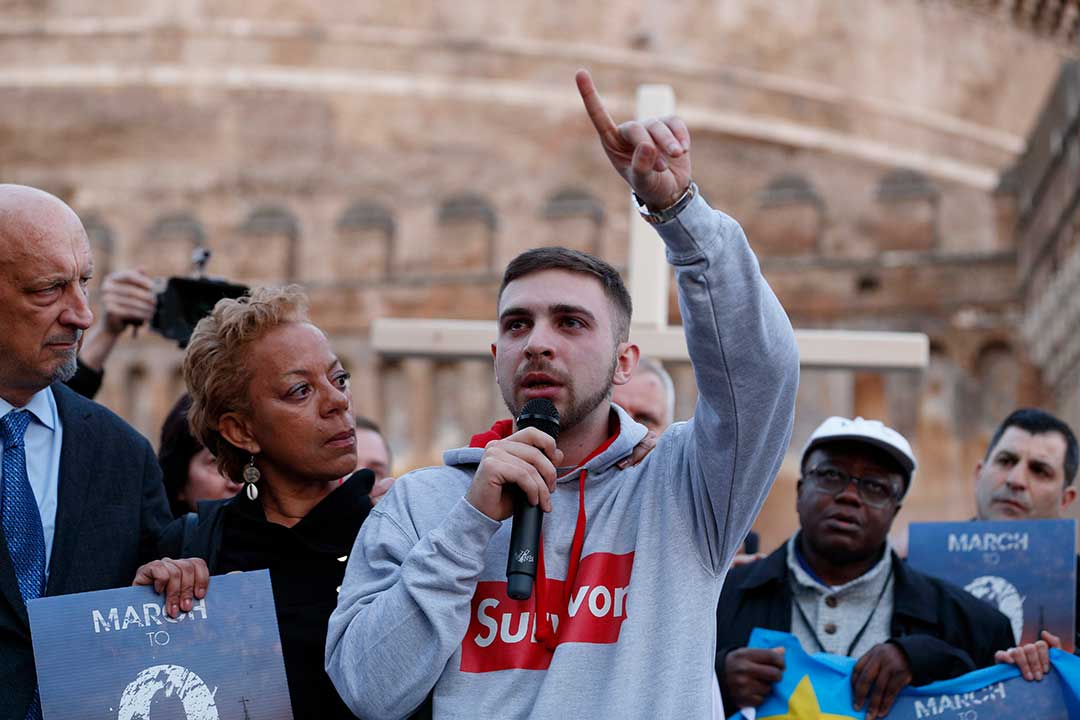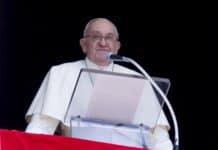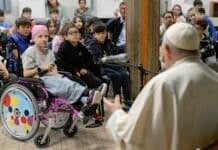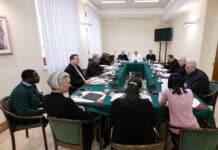COMMENTARY
[Today’s commentaries both address seminary reform, which is crucial to the reform of clerical life and discipline in the Church. The first essay, from a seminary rector, describes important reforms that have been accomplished in the United States since Abuse Crisis 1.0 in 2002. The second essay, from five seminary professors, outlines a program of further reform in response to Abuse Crisis 2.0. XR II]
US Seminaries Today: Not What They Used To Be
by the Rev. James Mason
I’m a seminary rector. And I welcome the scrutiny that America’s seminaries find themselves under today, as our Church strives to reform itself after another wave of abuse scandals. Now, as the international consultation on abuse called by Pope Francis meets in Rome, I hope that my reflections on priestly formation may be of interest to all those who work for a holier Catholic Church, pastored by holy priests.
I was ordained at age thirty-four, in 2001. Since then, I’ve been a pastor for nine years, a diocesan vocation director for eight years, a seminary rector for four years, and the director of a retreat center for a decade. For 13 years, I’ve also led seminarians in the thirty-day Ignatian spiritual exercises. In short, I’ve been involved in priestly formation in one way or another since my ordination, and what follows reflects that.
My experience suggests to me that much of what’s being said about seminaries during the current abuse crisis is somewhat ill-informed: too many commentators seem unaware of the positive developments that have taken place in American seminaries over the past twenty-five years, and are therefore out of touch with what’s actually happening in priestly formation today. Visitors to the seminary I’m privileged to lead, Kenrick-Glennon Seminary in the Archdiocese of St Louis, will find something quite different from the anachronistic (and suspicious) portraits of contemporary American seminary life found these days in certain media outlets and ecclesial circles.
According to the study of clerical sexual abuse commissioned by the U.S. bishops and conducted by the John Jay College of Criminal Justice, almost 70% of the American priests involved in abuse cases were ordained between 1950 and 1979. That by no means excuses the rest (21% were ordained before 1950s, 11% after 1979) and it emphatically doesn’t mean that further reforms aren’t needed now. But it does suggest that something different has been taking place in seminaries in recent decades, contrary to what is often assumed.
My personal experience of seminary culture over the past twenty or so years confirms the statistical data: There has been a gradual but noticeable reform in seminary formation programs and personnel. The seminal document for that development was Pope John Paul II’s 1992 post-synodal apostolic exhortation, Pastores Dabo Vobis [I Will Give You Shepherds]. Ideas form cultures, and John Paul’s vision of priestly formation in Pastores Dabo Vobis has been the most significant and decisive idea in shaping seminary culture over the past twenty-five years. That re-shaping and reform has taken time, and it is far from complete.
But without Pastores Dabo Vobis and its insistence that the intellectual, spiritual, and pastoral formation of priests must build upon a firm foundation of human formation, our American seminaries would still be suffering from the hangover of scattershot and confused priestly formation that characterized the immediate post-Vatican II years in the United States. Pastores Dabo Vobis gave the entire Church a template for priestly formation; seminaries in the United States have, in the main, adopted that template and accepted the challenge of reformed priestly formation; I hope our reform experience may be of some interest to others in the world Church.
One of the most important things we have learned since John Paul II issued Pastores Dabo Vobis is that while getting the idea of priestly formation right is essential, it is only the first step in the reform process. It also takes the right seminary team, and the right seminary program, to implement that idea. The development of personnel and programs takes time, but it is well worth the effort – and it has been happening.
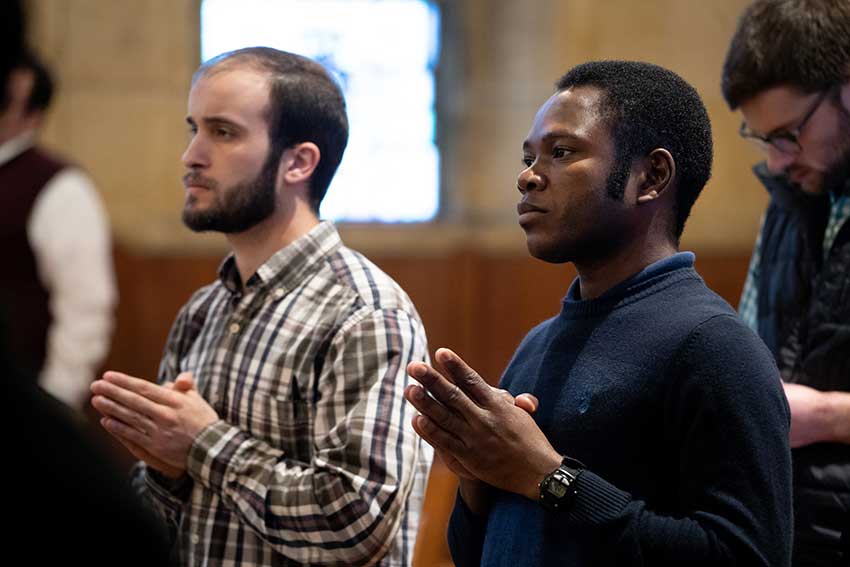
As the rector of a large seminary, my first priority has been building a team of affectively mature, holy, and accessible priests. My faculty and I tell our seminarians that their number one responsibility is to make themselves known: to be transparent, honest, and generous in formation. If they’re going to do that, then we need faculty and formation advisors who have the capacity to receive their generous transparency, and who can lead these men to continued growth in healthiness and holiness.
The authoritative Church document on seminaries that guides our work, the 2016 Ratio Fundamentalis Institutionis Sacerdotalis (which is itself an extension of the vision of Pastores Dabo Vobis), makes this quite clear, noting that a seminarian is called to develop a balanced and mature capacity to enter into relationships, to have a basic human and spiritual serenity, to overcome every form of self-promotion or emotional dependency, and so on. That development is only possible when priestly formation is led by seminary formators who have those qualities and display them in their ministry.
Priests who are hesitant to leave parish life because they find pastoral work immensely rewarding, fruitful, and life-giving are among the most appropriate candidates to serve as the priest-formators of seminarians. These priests’ experience of investing in their parishioners bodes well for their capacity to invest in the lives of the seminarians as father and mentor. Seminary work for priests can never be again what it too often was in the past: an escape from pastoral life; or time off; or a self-improvement project; or, worst of all, a refuge for unassignable priests. When it’s been any of these, the results have been, predictably, disastrous.
Bringing the goods of family life into the formation process is another great aid in building a mature seminary culture. Many American seminaries are currently enriched by the more extensive involvement of lay men and women in the formation process, not only in the classroom but also in the administration of the seminary. The consistent observations and input of our laity have proven crucial in assessing a seminarian’s progress in formation. Bottom-line questions like “Would you want this man as your pastor?” or “Would you want this man to minister to your family?” lead to honest and invaluable insights from the lay members of our staff.
Pastors in the field typically want to know two things about a man in seminary formation: “Can he be with people? Is he a hard worker?” Bishops, typically beset by a personnel crunch, often have a very practical concern: ““Is this man easily assignable, assignable, barely assignable, or unassignable?” As a seminary rector evaluating the men under my care, I am constantly asking myself, “What does this guy look like in a parish?” In all three cases, though, the questions being raised are one of basic human formation. And those questions are being raised with a bluntness, clarity, and urgency in seminaries today, in a way they weren’t before.
We have also learned that, in human formation, it’s not enough to encourage a man. Today, it’s equally essential that we’re able to challenge a man. When men are appropriately but consistently challenged with respect to the qualities they need to become healthy, holy, joy-filled parish priests, they respond. They begin to challenge each other. They see the need for growth, and they come to want it. The seminary must become – and the best seminaries have increasingly become – “Coddle Free Zones.”
The spiritual life integrates all the other areas of formation – human, pastoral, and intellectual. My experience is that seminarians speak much more freely today about their spiritual lives than was possible, or even encouraged, a generation ago. One simple but telling episode may illustrate that point, and suggest what an integrated culture of formation looks like. We recently had a five-day, directed, silent retreat. At the end of the retreat, our academic dean, a layman, asked the men at the lunch table to share a specific grace from their retreat. I was heartened by how easily the seminarians spoke of the graces they had received from their solitude and silence with the Lord. The dean then asked me about my own recent retreat, and I openly shared with the men a specific grace I had received.
Such sharing is an important skill for seminarians. And their formators need to be able to model it. Alas, during my seminary days, that was not the norm, and might have been considered an infringement of conscience, an invasion of what is technically known in spiritual direction and sacramental life as the “internal forum.” But as I often tell the seminarians at Kenrick-Glennon, “Jesus did not violate the internal forum when he spoke of the Father’s love.” By which I mean that, as priests, they need to be able to speak – appropriately, but authentically – of their own experience of God’s love. People need to know: this divine love is real; this man has experienced it; he wants to share it. Seminary formation a generation ago didn’t train men to do that. The best seminary formation today does.
In the past, too many priests “got through” seminary formation thanks to clear intellectual gifts, and perhaps even some notable pastoral skills. But the Church’s experience with priestly attrition and dereliction over the past fifty years has underscored the imperative need to address immaturity in a man’s human and spiritual life during his priestly formation. Animated by the vision of Pastores Dabo Vobis, deploying John Paul II’s Theology of the Body to describe a healthy, orthodox, and biblically-rooted understanding of human sexuality for seminarians, and working in cooperation with sound psychologists who truly love Christ and the Church, many American seminaries today have assembled the personnel and have begun to create the programs that address this immaturity and lead to real growth.
In an atmosphere in which the focus (understandably) tends to be on everything the Church has gotten wrong in dealing with the corruption within our own house, it is easy to miss something very encouraging: American seminaries today are as different from the seminaries of 20 or 30 years ago as today’s cell phones are from the communications technologies of 1990.
There has been considerable and important reform in priestly formation, and that process has accelerated since the scandals of 2002. As John Paul II’s Theology of the Body gave the Church a vision, and the intellectual tools, for a deeper and richer integration of the truth of human sexuality into both marriage and the celibate life, Pastores Dabo Vobis has given us the vision for a deeper and richer integration of human and spiritual maturation in seminary formation. The best seminaries in the United States have found the people and tools to bring that vision to life.
Real reform is underway – and has been underway for at least a decade and a half. What’s needed now, in our seminaries, is a deeper integration of that vision of an integrated spiritual, intellectual, pastoral, and human formation of future priests, a deeper cultivation of the personnel who bring that vision to even more vibrant life, and further development of the tools that can help us accomplish what we describe as our mission at Kenrick-Glennon Seminary: Configuring men to the heart of Jesus Christ.
Father James Mason is the President-Rector of Kenrick-Glennon Seminary in St. Louis and a priest of the Diocese of Sioux Falls, South Dakota. After his ordination in 2001, Father Mason served as pastor of St. Rose of Lima Parish in Garretson from 2001-2004 and as the director of vocations, vice-chancellor, and medical moral advisor for the Sioux Falls diocese from 2001-2009. In addition, Father Mason served as the director of Broom Tree Retreat Center from 2004-2014 and during that same period was pastor of St. Lambert Parish in Sioux Falls. He joined the Kenrick-Glennon Seminary community in 2014 as director of spiritual formation and dean of students. In 2015, Archbishop Robert J. Carlson of St. Louis appointed him President-Rector.

